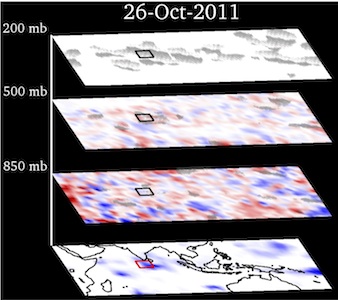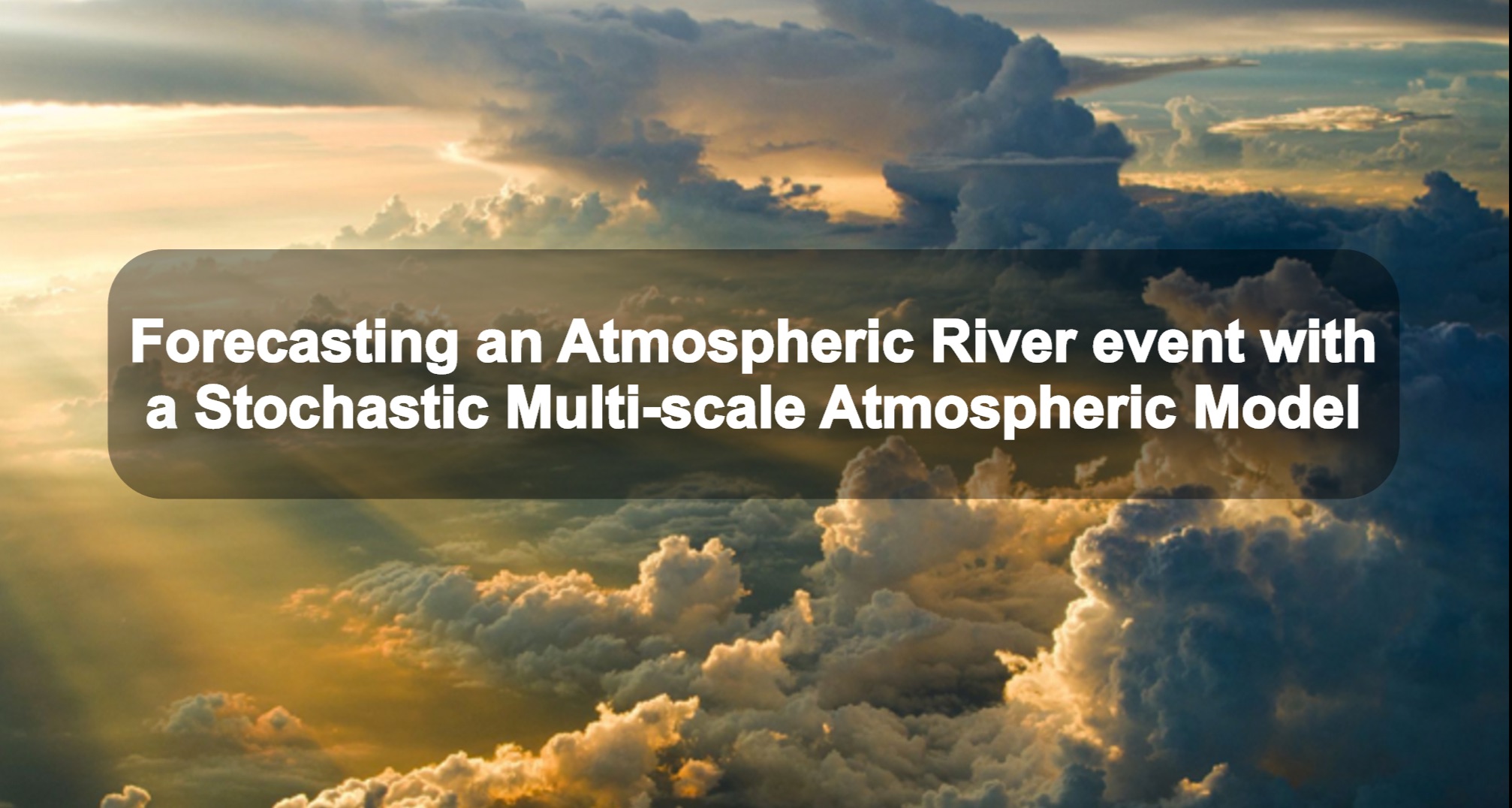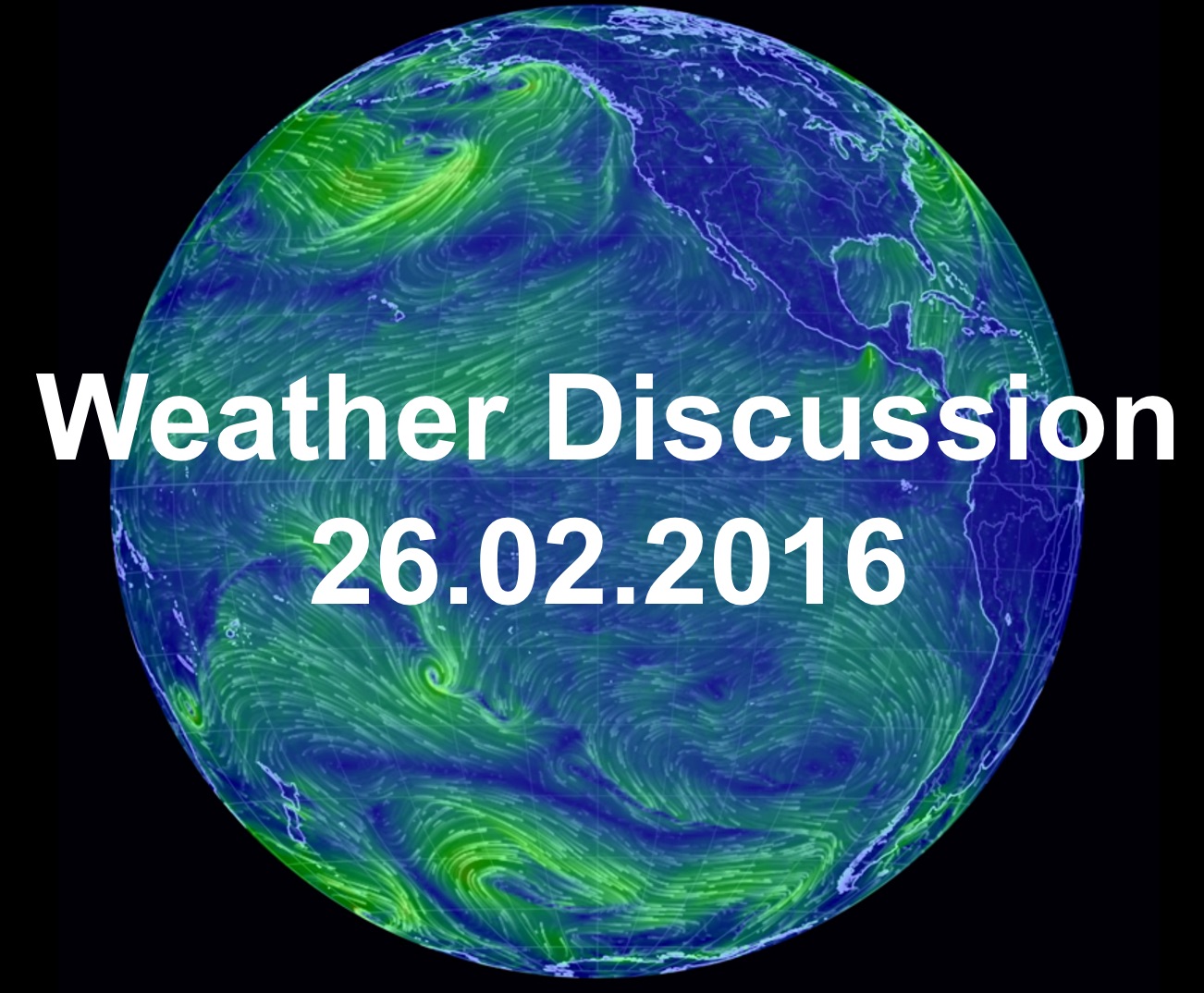Towards the Prototype Probabilistic Earth-System Model for Climate Prediction [2014 - 2017] (Funded by ERC)
This programme of research is intended to make climate simulations more consistent both with the multi-scale nature of climate, and with related scaling symmetries of the partial differential equations which govern climate. This will be achieved by moving away from the traditional deterministic approach to the closure problem in computational fluid dynamics, and towards a more novel description of physical processes near and below the truncation scale of climate models, using contemporary nonlinear stochastic-dynamic mathematics. The aim of the proposed research is to produce the world's first Probabilistic Earth System Model. The consequences are enormous: a comprehensive climate model with reduced biases against observations, a model which will be capable of producing estimates of uncertainty in its own predictions, and a model which can make use of emerging energy-efficient probabilistic processor hardware, key to practical success as we approach the era of the exascale supercomputer. The development of the prototype Probabilistic Earth-System Model will open a new era of international scientific collaboration on climate model development, and has the potential to influence climate policy, on mitigation, adaptation and on geoengineering, at the highest governmental and intergovernmental levels.
EASM-3: Quantifying Predictability Limits, Uncertainties, Mechanisms, and Regional Impacts of Pacific Decadal Climate Variability [2014 - 2017] (co-PI, Funded by NSF)
The project team proposes a coordinated research effort to better understand the basic physical dynamics of Pacific decadal variability and assess the skill of Pacific decadal predictability, along with its uncertainties and practical value. The research focuses on Community Earth System Model (CESM), with its vast repository of archived runs supplemented with targeted predictability experiments. The analysis focuses on using sophisticated statistical models (Linear Inverse Models) to identify statistical relations among variables, diagnose physical processes, and isolate potentially predictable components of the flows. It also involves using regional coupled atmosphere-ocean, along with uncoupled ocean and atmosphere models, to enhance the understanding of regional response and its potential for practical use in forecasting. The project brings together scientists skilled with developing decadal climate diagnostics, making both statistical and dynamical predictions, and executing regional coupled climate downscaling and regional high-resolution ocean modeling.
A Nudging and Ensemble Forecasting Approach to Identify and Correct Tropical Pacific Bias-Producing Processes in CESM [2014 - 2017] (PI, Funded by NOAA)
We plan to study the spatiotemporal structures of bias development in CESM forecasts, launched from numerous initial states and during which random ENSO and MJO events occur, to determine the relative importance of poor mean-state representation versus the integrated impacts of the transient flows. This bias development will be studied as a function of season to account for significant changes in the background state of the coupled oceanatmosphere system in the tropical Pacific. We will also seek to ascribe these effects to wellknown physical processes for the specific climate modes of variability. We will test the sensitivity of the bias development to changes in coupled model resolution and model parameter selection. We will also implement nudging experiments (towards observations) to pinpoint where the worst parts of the biases develop apart from the nudged variables.
Assessing the Impact of Diurnal Wind Variability [2014 - 2018] (co-I, Funded by NASA)
The planned launch of RapidScat aboard the International Space Station, which does not follow a sun synchronous orbit, will offer further opportunities to assess diurnal variability of ocean winds. The objective of this study will focus on first characterizing seasonal and interannual variability of diurnal winds both using multi-sensor measurements (from ASCAT, OSCAT, and WindSat) and also RapidScat measurements once they become available. This will allow us to characterize seasonal changes in the diurnal amplitude and year-to-year variations in the structure and magnitude of diurnal winds. Weather stations and mooring-based winds will be used to validate satellite-derived results. While satellite-based assessments of diurnal winds have typically been limited to examining a single diurnally varying harmonic, the more extensive sampling should make it possible to consider semi-diurnal and higher frequencies as well. The study will also use an one-dimensional upper-ocean model with high vertical resolution to quantify the role that diurnal winds play in upper-ocean processes. Results will be used to develop improvements for a more idealized model used to represent upper ocean processes in prognostic climate models. Our goals are to assess the impact of including or neglecting diurnally varying winds on large-scale ocean circulation studies and to quantify the impact of the rectified effects of radiative forcing and diurnal winds on surface temperature and salinity, upper ocean heat content and air-sea heat fluxes.




 About me
About me 


